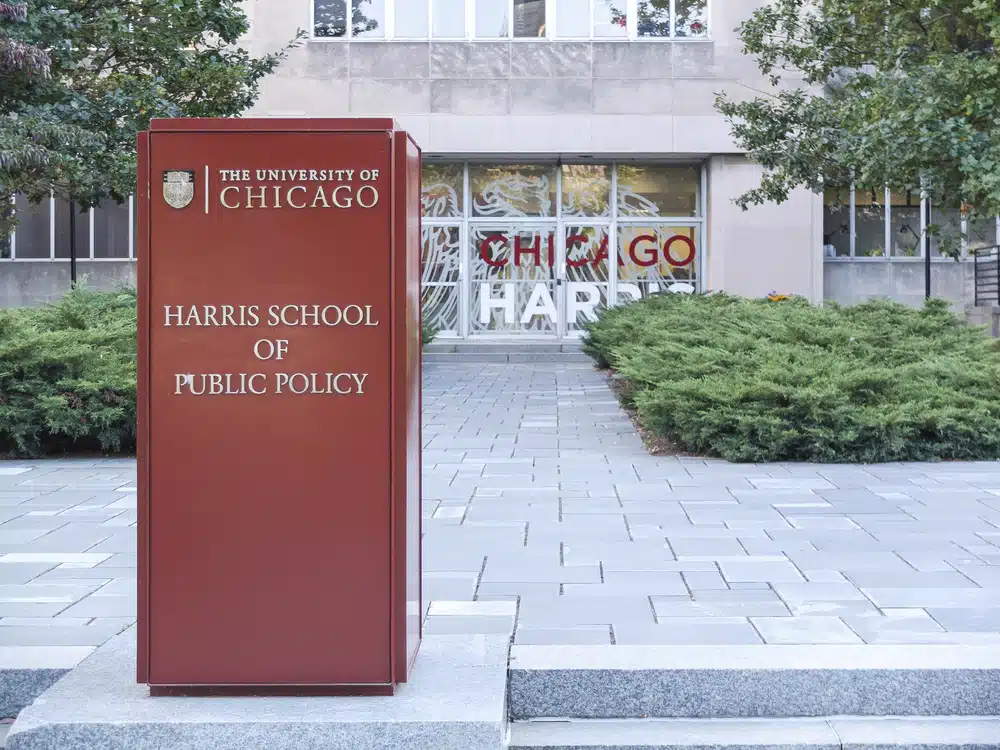UChicago Freshman Class Size
Understanding the University of Chicago’s (UChicago) freshman class size offers insights into the university’s evolving dynamics. The shift in class sizes over the years mirrors broader changes in higher education. Are larger classes a boon, presenting diversity and vibrancy? Or do they dilute the close-knit academic experience many cherish? Join us as we explore these questions, inviting you to reflect on the broader implications for academia.
The History of UChicago’s Freshman Class Size
In the early stages of the University’s history, the size of the freshman class was relatively small. Initially focused on graduate studies, UChicago then made efforts to establish and nurture its undergraduate programs.
However, the journey of UChicago’s freshman class size began long before the establishment of the university itself. In the late 19th century, the landscape of higher education in the United States was undergoing a transformation. As the demand for specialized knowledge grew, so did the need for institutions that could cater to the intellectual needs of the nation.
Early Years: The Founding and Growth
Founded in 1890 by the American Baptist Education Society, with a generous donation from oil magnate John D. Rockefeller, the University of Chicago was originally concentrated on postgraduate studies. Although the university admitted its first undergraduates in 1892, the freshman class consisted of a small group of academically devoted individuals.
These early years were marked by a sense of pioneering spirit. The university’s founders envisioned a place where students could engage in rigorous intellectual pursuits, unencumbered by the traditions of older institutions. The small size of the freshman class allowed for intimate interactions between students and faculty, fostering a sense of camaraderie and intellectual curiosity.
Over the years, UChicago opened its doors to more students, resulting in increases in the size of its incoming classes. By the mid-20th century, the size of the freshman class had expanded substantially as the university’s reputation flourished.
Expansion in the 20th Century
Throughout the 20th century, UChicago’s commitment to rigorous academic standards and innovative research enabled it to attract bright and curious student minds. The university saw steady growth in its class sizes, even during periods of societal upheaval. The democratization of higher education throughout the century also played a role in this gradual expansion.
As the world grappled with the challenges of two world wars and social revolutions, UChicago remained steadfast in its mission to provide a transformative education. The university’s commitment to intellectual rigor and interdisciplinary studies attracted students from diverse backgrounds, further contributing to the growth of its freshman class size.
By the mid-20th century, UChicago had firmly established itself as a leading institution of higher learning. Its reputation for academic excellence and intellectual vibrancy drew students from all corners of the globe. The freshman class size continued to expand, reflecting the university’s growing influence and appeal.
Recent Trends and Changes
In the 21st century, a significant rise in UChicago’s freshman class size has been observed, attributable to the university’s proactive effort to widen its outreach and attract exceptional talent from around the globe. Recent records have reported upscaled freshman classes, reflecting the university’s active commitment to increasing its student population. Specifically, for the Class of 2026, the freshman class size stands at 2,041 students.
UChicago’s commitment to academic excellence remains unwavering. The university continues to attract students who are passionate about intellectual exploration and eager to make a difference in the world. By expanding its freshman class size, UChicago is able to provide more opportunities for students to engage in meaningful research, collaborate with renowned faculty, and contribute to the vibrant intellectual community that defines the university.
Factors Influencing UChicago’s Freshman Class Size
Several key factors have influenced UChicago’s increase in class sizes, including changes in admission policies, the university’s reputation and rankings, and a variety of financial considerations and scholarships.
UChicago’s commitment to academic excellence and fostering a diverse student body has led to significant changes in their admission policies. One such pivotal change was the decision to adopt a test-optional policy in 2018. This policy has allowed for more students from different backgrounds to apply and gain admission, as it recognizes that standardized test scores may not always accurately reflect a student’s potential. By removing this barrier, UChicago has been able to attract a wider pool of applicants, resulting in an increase in the freshman class size.
In addition to changes in admission policies, UChicago’s reputation and rankings have played a crucial role in attracting a larger number of applicants. The university’s well-established reputation for rigorous academic standards, faculty scholarship, and innovative research has significantly boosted its appeal to prospective students. UChicago consistently ranks among the top universities in the world, and this recognition has not only attracted more applicants but also allowed the university to be more selective in choosing their incoming freshman class.
However, it is important to note that the increase in class size is not solely driven by academic factors. Financial considerations and scholarships have also played a significant role in shaping the freshman class size at UChicago. The university understands the importance of financial aid in making education accessible to all students, regardless of their socioeconomic background. To this end, UChicago has consistently expanded its financial aid programs and scholarships, ensuring that talented students from all walks of life have the opportunity to attend the university.
One of the notable initiatives that UChicago has implemented is the No Barriers Program. This program aims to remove financial barriers for students by providing comprehensive financial aid packages that cover tuition, fees, and even room and board for families with incomes below a certain threshold. By offering such generous financial aid packages, UChicago has been able to attract a diverse range of students who may have otherwise been unable to afford a private university education.
Another impactful scholarship program at UChicago is the Odyssey Scholarship Program. This program specifically targets students from low-income backgrounds and provides them with full-tuition scholarships. The Odyssey Scholarship Program not only ensures that deserving students can attend UChicago without the burden of tuition costs but also creates a supportive community for these students, offering mentorship and resources to help them thrive academically and personally.
Through these nimble and responsive financial aid initiatives, UChicago has successfully increased its freshman class size while maintaining its commitment to academic excellence and diversity. By making a UChicago education accessible to more families across the socioeconomic spectrum, the university has been able to attract a talented and diverse student body, enriching the academic and social fabric of the campus community.
Impact of Class Size on Student Experience
Several aspects of the UChicago student experience are imprinted by the class size as it impacts academic opportunities, social dynamics, and available resources.
When it comes to academic opportunities, class size plays a significant role. With a larger class size, students have more opportunities to learn from a diverse range of perspectives. In a larger class, there are more students with different backgrounds, experiences, and ideas. This diversity enriches the learning environment and encourages students to think critically and consider alternative viewpoints. It allows for a more comprehensive exploration of various topics, as students can engage in lively discussions and debates.
UChicago’s evolving class size presents both opportunities and challenges. In the past, the university was known for its smaller class sizes, which facilitated close academic discourse. These intimate settings allowed students to cultivate deep relationships with professors and peers, gain personalized attention, and indulge in in-depth discussions with prompt feedback.
However, as class sizes have grown, it’s posed the challenge of maintaining this intimacy. With more students, there’s the potential for professors to find it challenging to cater individually and for students to feel overwhelmed in larger discussions.
On the flip side, a larger class size brings a wealth of social advantages. The increased number of students presents a more expansive pool for interactions, forging a vibrant and inclusive community. A greater number of students means more diverse backgrounds, interests, and experiences, leading to a richer and more stimulating social milieu.
UChicago has been proactive in addressing the challenges of a larger class. The university has launched various initiatives like small group discussions, mentoring programs, and extracurricular activities to keep the sense of closeness and connection among students. The aim has always been to ensure that, irrespective of class size, the core values of intimacy, support, and collaboration remain intact.
Infrastructure, too, has seen changes. With the larger class sizes, UChicago has introduced more housing options to cater to its expanding student base. Recognizing that students’ living conditions directly impact their academic success and well-being, the University has prioritized creating comfortable accommodations. Campus resources, including libraries, study areas, and research facilities, have also seen expansions to cater to the needs of the growing student community.
Conclusion
UChicago’s evolving class size contributes to a lively and engaged academic setting. Students continue to be active participants in discussions, collaborate in research, and form enduring bonds with peers. This communal atmosphere supports intellectual growth and kindles students’ enthusiasm to delve into multiple disciplines.
The changing freshman class size at UChicago speaks volumes about the University’s journey, principles, and dedication to its students. Embracing larger class sizes while preserving the University’s foundational values showcases UChicago’s unwavering commitment to delivering an unmatched educational experience. This balance emphasizes not just individual attention and intellectual curiosity, but also an enduring sense of community.








































